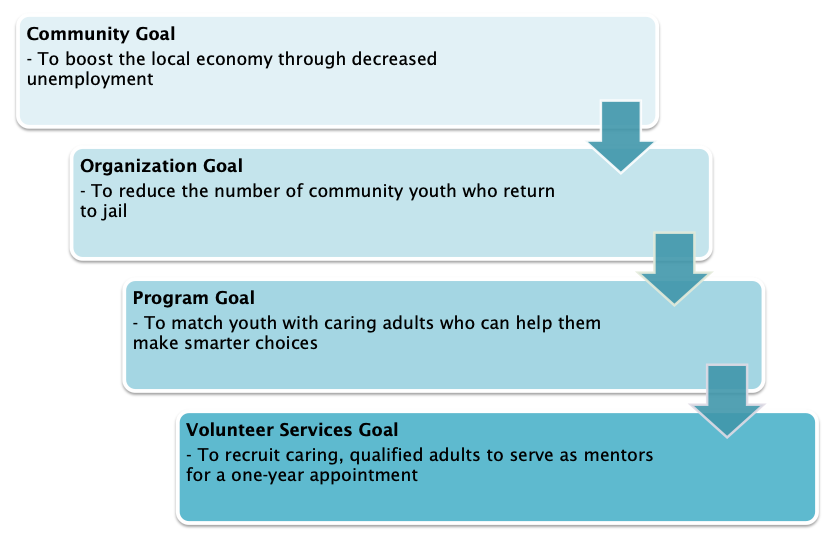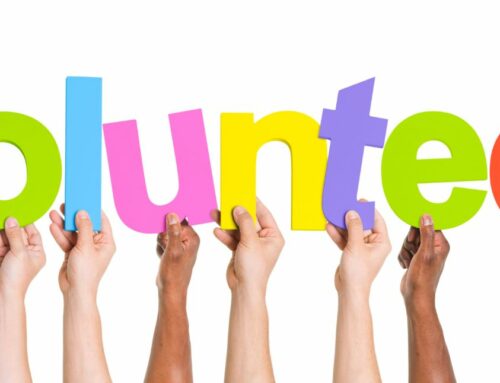
1 Really Big Way to Gain Respect for Volunteer Services
When seeking respect and understanding for the important role of volunteer services, it’s critical that you first are able to speak the language of the rest of your organization.
What language is that? What’s the overarching language of nonprofits and public sector organizations?
The universal language of goals and objectives.
Really? Yep. Doesn’t sound sexy does it?
But, rest assured. If you want to capture a co-worker’s attention, start a conversation about their department’s goals.
And…how you can help them reach them.
Now, you’ve got their attention!
While you may wish your colleagues would take time to understand how volunteer engagement really works, realistically they are focused on whether or not they are meeting their own program goals.
The good news is you can often help them achieve those goals with volunteer talent.
But, you’ve got to start where they’re at.
It all begins with goal alignment.
That’s why we created the Level Up Your Volunteer Management Game Plan Mini Series. All free, all for you.
(Here are all the posts and freebies in the series: 1, 2, 3, 4, 5, 6)
Aligning Goals to Gain Momentum
The most powerful goals are aligned across stakeholder groups. These goals should overlap the organization’s interests, the program’s interests, and the community’s interests.
The Sweet Spot for Aligned Goals
The strongest alliances happen when goals are aligned across stakeholder groups.
Consider a mentoring program for at-risk youth that has just opened. Let’s say the youth involved have been incarcerated one time for a minor offense. The organization’s mission is to reduce the chance that youth will return to jail through mentoring, support, and employment training.
What are the goals for each group and how do they align?
For the community, the goals might be to …
- Maintain safe neighborhoods by reducing crime
- Boost the local economy through decreased unemployment
- Increase the number of skilled youth working in local businesses
For the organization, the goals might be to …
- Raise adequate funding to continue operations
- Build strong connections and support a vibrant local neighborhood
- Reduce the number of community youth who return to jail
For the program, the goals might be to …
- Engage a specific number of youth each year
- Place youth in internships with local businesses
- Match youth with caring adults who can help them make smarter choices
For all three of these groups, there is strong alignment between most of the goals for each — all are interested in supporting the economic growth of the local area, reducing crime and recidivism, and supporting youth in the workplace.
Because these interest directly align, the potential for a strong, mutually-beneficial partnership exists.
How might volunteer services get in on this action? They might supply mentors to work with youth. They might also make connections with local businesses who are willing to host a youth intern.
So, the goals of volunteer services might be to …
- Recruit caring adults to serve as mentors for a one-year appointment
- Engage local businesses as worksites for a semester
Note the external-facing goals for volunteer services have nothing to do with volunteer hours, retention rates, or satisfaction. However important they are for gauging the health of the volunteer program, they are internal measures that mean little to the other programs they partner with.
The Goal Cascade
For the example above, the goals of each group “nest” within one another, each serving the goals listed above it. You might also add levels for team and individuals beneath volunteer services.
Aligning the Goals of Volunteer Services
When gaining respect from co-workers, first seek to understand before asking to be understood.
As a support mechanism and capacity builder for your organization, you must understand the role you play in the larger picture and be able to explain it to others in a way they can readily understand.
When you choose the goals you will communicate throughout the organization, ask yourself …
Would the results of these goals be good for the organization and community, not just my department or program?
Until you can say “yes” with confidence, and be able to explain why, you have work to do.
To be proactive, it also helps to be aware of the realities within which you work. So, also ask …
What are competing agency-wide goals and initiatives I must be aware of? And, is there any way volunteer services is supporting these?
Final Check — Is there Agreement?
Aside from the alignment of goals and priorities, there is one more thing you can do to speak the language of your colleagues. That is, check for agreement, or whether your co-workers and leadership view things the same way you do.
It’s critical that there is some level of agreement before you ask colleagues to support your department goals.
Ask these questions before you make your pitch for greater support. Your answers will help you determine if more education is needed about how your interests align.
- Challenges & What Needs to be Done to Resolve Them — Do you both see the current situation the same way?
- Priority Issues — Do you agree about where your organization is at currently?
- Collaboration on Goals and Plans — Do you agree about where it should head?
- Timeline & Shared Resources (info, expertise, future support, etc.) — What are you willing to negotiate in order to get mutual needs met?
By clearly communicating how your goals align with fellow departments, the organization, and the community you’ll begin to turn the tides on how volunteer services are viewed.
In addition, by checking for understanding and shared view, you can build a shared future that is fully aligned and more powerful than ever.
Level Up Your Volunteer Management Game Plan Mini Series
In this series, we share six free downloads to help you plan your volunteer involvement. Make sure to grab the rest of your tools: 1, 2, 4, 5, 6
This week, drop in your email for our Goal Cascade Worksheet. It’ll help you align and focus your goals and get better buy-in to boot!







